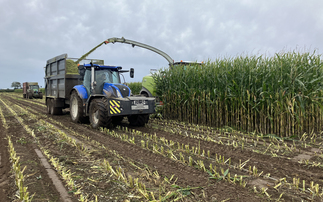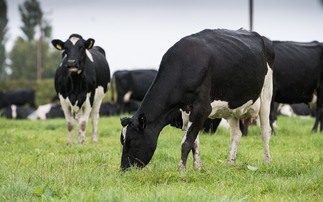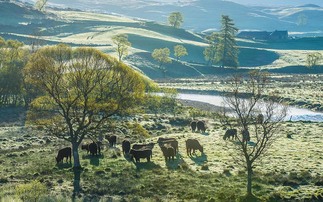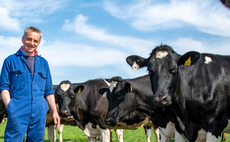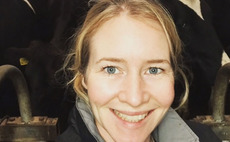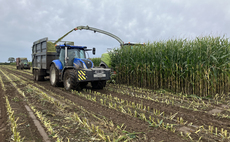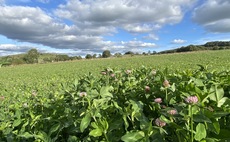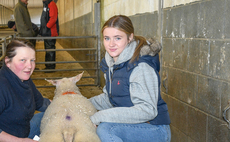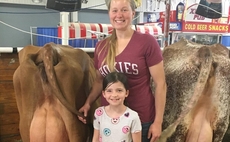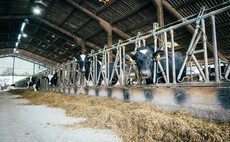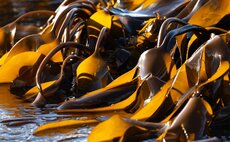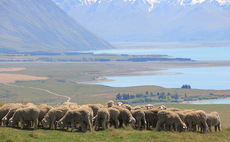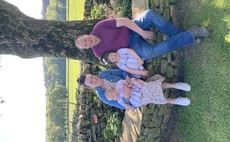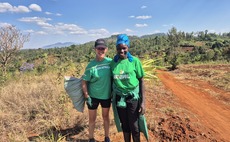
Irthingelt Dairy Shorthorns added the breed championship at last year's Dairy Expo to a respectable line-up of showring titles to date, but they make up only one arm of the farming business.
Third generation farmer Thomas Moscrop and his family have lived and worked at Ryeclose Farm since the 1950s, and have continued to grow and adapt the business with the changing times.
Business development more recently has been with the next generation in mind, and is the very reason Dairy Shorthorns were introduced after Thomas' son Stephen expressed an interest in showing dairy cattle as he was growing up.
Thomas, who runs the herd in Irthington, Cumbria, with the help of two full-time staff and two apprentices, one being Stephen, says they have fitted into the farms integrated dairy and beef structure well, alongside British Friesians, which have remained the stalwarts of the herd.
Dairy Shorthorns now make up 100 of the farm's 400-head milking herd, which is managed within a grassland system, alongside 300 followers and about 900-head of beef cattle, which are either finished or sold as stores.
Showing
Thomas says: "It was as the kids started to grow up and Stephen started having a bit of an interest in showing cattle that we got into the breed.
"I knew I could not take any of my British Friesians and show them against Holsteins anywhere in the country, so we decided on Dairy Shorthorns and, after the first two arrived about 10 years ago, it has just escalated from there."
Two foundation females were bought-in from the Hewson family's Parton herd at Wigton and numbers have continued to build using home-bred own replacements.
Sexed semen is generally used on the show cows now, with sires used most recently including Cor-Bloo Ricochet and Bushmills Jazz.
The Moscrops' will generally show at UK Dairy Expo and the Royal Highland Show, as well as a few other local shows each year.
They have had a successful few seasons recently, taking the Dairy Shorthorn championship at last year's Dairy Expo with Irthingelt VI 5, as well as the breed championship at the Royal Highland with Irthingelt Talula 2 as a fourth-calver in 2018, before taking the reserve breed championship last year with the same cow.
Back at home though, it is British Friesians which make up the main of the herd, a breed the family have found nothing to rival in their system.
Thomas says: "We have stuck with the British Friesians for ease of management mainly, which has suited us, especially in the past when it had just been me and my brother working on-farm.
"Their fertility and longevity is good, and they are a robust breed you can rely on to just get on with it.
"I did dabble with Holsteins a bit when I left school, but I soon changed my mind. They were not well-suited to our system and meant we would never be able to get the best from them."
Thomas has also experimented with Montbeliardes in the past to try and breed a dairy bull calf of slightly more value.
He says: "I did not really like the idea of trying to get a cow in-calf with a 50 per cent chance of producing a calf at the end that was worth nothing.
"About 15 years ago we got up to milking about 30 of them. The original Montbeliardes were good, but they got a bit extreme latterly. It was their temperament and feet which let them down."
Grass
The farm's grass-based system is run over 465 hectares (1,150 acres) in total, and is split across four holdings within a three-mile radius of Ryeclose, the main farmstead.
Ground consists of owned as well as some rented grassland, which is managed as a mix of permanent pasture through to short-term leys.
Milkers graze an area of about 105ha (260 acres) at Ryeclose, with turn-out usually in early April through to early December if the weather allows.
Fields are accessed via a one-mile network of concrete tracks and, averaging about 5ha (12 acres) in size, will generally see cows move to fresh grass about every three days during the grazing season.
Thomas says: "Our system is probably another reason why we have stuck with the Friesians and Shorthorns. The furthest fields are about half-a-mile from the parlour, so we need a cow which can withstand walking.
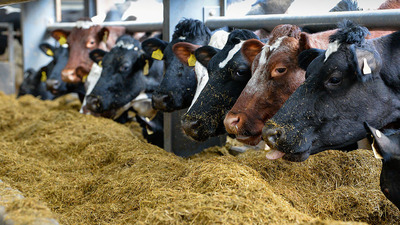
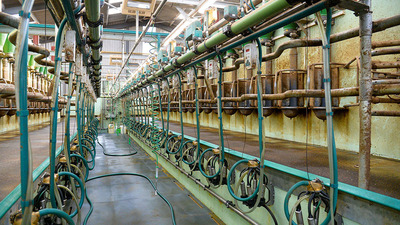
"We also want an animal which can tolerate a bit of colder and wetter weather outside later in the year with our climate here, so we can utilise grass for as long as possible.
"Some of the ground we rent is also park type land so needs to be grazed to be utilised and is used for grazing youngstock."
Cows are calved all-year-round, with calves hand-reared in individual pens until they are 10-14 days old when they move onto one of two automatic calf feeders in batches of 20.
Replacements are bred from cows considered to be the top end of the herd, AI'd to either a Friesian or Dairy Shorthorn bull for two cycles.
Beef
Beef bulls are also kept and include Hereford, Limousins and Aberdeen-Angus, which are used to serve the rest of the herd and as sweepers.
Heifers are calved at 28-30 months, and about 60 each year are put to either a home-bred Shorthorn or Friesian bull, which Thomas explains is for ease of management primarily, with animals split between the several holdings.
About 200 home-bred beef animals are finished each year and sold deadweight, as well as 250 stores and some dairy-bred beef heifers sold as breeders via Harrison and Hetherington at Carlisle.
About 100 Blue-Grey suckler calves are also bought-in and finished each year.
Thomas says: "Every calf born is reared on-farm, including most of the Friesian and Shorthorn bullocks, which finish off grass alongside the beef-bred animals.
"They finish at 26-28 months off grass and probably average about 320kg at mostly O+ with some Rs."
The herd averaged 7,600 litres last year, at 3.45 per cent protein and 4.35 per cent butterfat and milk is supplied on a First Milk contract.
Farm facts
- Grass-based system run over 465 hectares (1,150 acres), split across four holdings
- 400-head milking herd, made up of 300 British Friesians and 100 Dairy Shorthorns, alongside 900 beef stores and finishers
- Twice-a-day milking through a 12-month-old 36/36 GEA parlour
- Milk sold to First Milk
- Four staff, including two full-time and two apprentices
- Average rainfall of 1,016mm (40in) or more per year
Cows are milked twice-a-day in a 36/36 GEA parlour, which was put in 12 months ago.
Thomas says: "I liked the old parlour and had probably spent half my life in it, but we had just outgrown it with the number we are milking now.
"I always had the plan in my head that I did not want Stephen to leave school last summer and be stuck in the old parlour for four hours each end of the day, which is how long it was taking us to milk, or chances are he would not have been here long.
"We have about halved that now, and milking takes about two-and-a-half hours each end of the day."
Future
Looking ahead, Thomas says he is keen the business remains a hands-on, family-run enterprise in a position to make its own decisions about the direction of the business.
He says: "We want to run a family farm, not a factory.
We also rely on contractors very little. I will do 95 per cent of the feet work on the cows myself, and in summer we do most of the field work ourselves.
"I am happy to see Stephen has the bug, but I have not pushed the children into faming.
"I never really had the choice; it was always a given I was coming home to farm, but I have always given my chlidren the option come out and help if they wanted.
"It is rewarding, but you have to be dedicated to it."
UK Dairy Expo
When: Saturday, March 14
Where: Borderway Exhibition Centre, Carlisle, CA1 2RS
Admission and parking: Free
Details on: www.https://harrisonandhetherington.co.uk/dairy-expo/
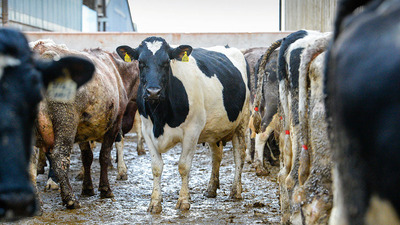
Milkers will graze from early April through to early December if the weather allows.













